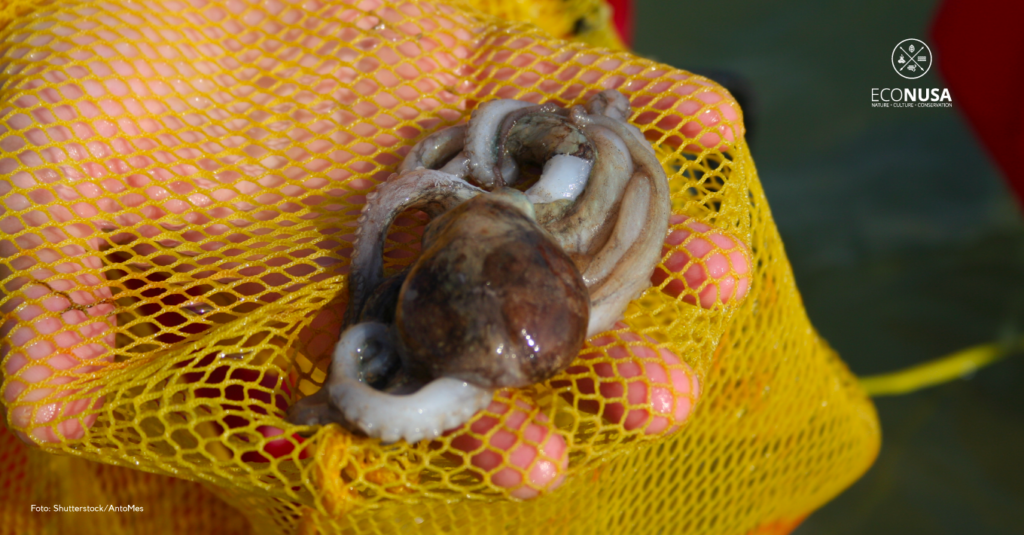
Production of octopus (Octopus cyanea) in Indonesia has impressive value. According to statistical data from the Ministry of Fisheries and Marine Affairs (KKP), total production of octopus in 2020 is 55,913 tons with the value of production reaching Rp1,2 trillion. The largest contributor area is East Nusa Tenggara (19,102 tons), followed by Central Sulawesi (10,411 tons), and East Java (7,838 tons).
In addition to the high number of production, octopus is deemed a commodity with competitive values. Data from International Trade Center (ITC) Trade Map shows octopus export volume by 2020 is 17,752 tons with export values reaching to USD 68.5 million or equal to Rp 979.4 billion. The largest export destination country in 2020 is China (3,464 tons), Italy (3,343 tons), and the United States (2,837 tons).
In a webinar held on 29 January 2022 by Jaring Nusa, Ocean Conservation Indonesia Foundation (YKLI) Director, Nirwan Dessibali, said that in 2021, octopus export in South Sulawesi reached 3,906 tons. Meanwhile, Indonesia has 12,834 tons of octopus production per year on average.
Read also: Quit Bombing Fish
Concerning the potential management here, YKLI plans to conduct a locally managed marine area in Langkai and Lanjukang Islands in Spermonde Island in South Sulawesi with an open-closed system. “This is a regulation that we tried to replicate from other regions, but it surely needs comprehensive participation,” said Nirwan.
According to Nirwan, a similar system can be found in Banggai Laut, Central Sulawesi. Furthermore, Nirwan added that an open-closed system in Langkai and Lanjukang Islands will be held for 3 months, meanwhile specific areas are still in discussion with fishermen.
Octopus is a sustainable small-scale fisheries commodity. Usually, octopus that has been caught will be sold by fishermen to collectors at the village level. Every collector has their own pricing and category.
Read also: Wambon Floss, New Gift from Boven Digoel
Usually fishermen caught octopus using small boats and simple catching tools like spear, ‘pocong-pocong’, and ‘doang-doang’. Pocong-pocong is catching tools made of wood filled with tin and coated with coloured fabric to mimic octopus. Whereas doang-doang is a catching tool that looks like crab with an added hook on each side.
Octopus has the ability to change the color of its body to mimic nearby environments (camouflage). Experiment that held by Josef (2012) shows that in camouflaging, octopuses choose specific color patterns in nearby environments. The purpose is to deceive the enemy and hunt prey.
Research that has been conducted in Tanzania reported that the presence of octopus is influenced by nearby water conditions such as sea surface temperature and chlorophyll-a. However, a rapid life cycle made octopus available throughout the year.
Read also: Boosting Nutmeg Productivity in Kaimana
Other than in South Sulawesi, Maluku also has competitive octopus production values. Statistics by KKP noted that octopus production in Maluku per 2020 was 3,817 tons. In addition to selling to collectors, octopus can also be processed to become dry octopus. Research by Ngabalin (2018) reported that dry octopus production in Kei Kecil Barat District, Maluku, can reach up to 25 packs every week. Meanwhile, octopus production value in Papua per 2020 reaches up to 302.67 tons.
Editor: Leo Wahyudi & Nur Alfiyah







